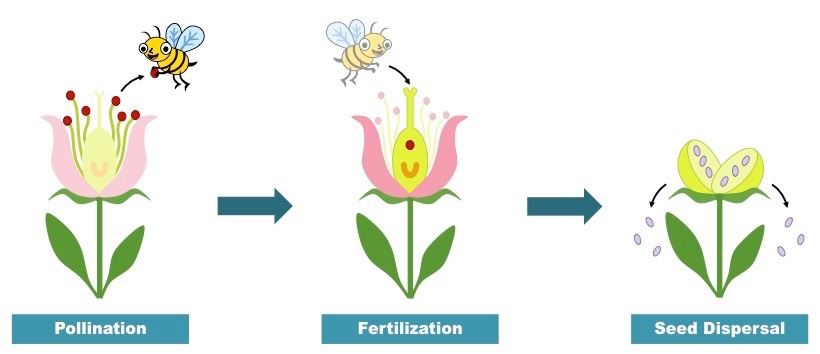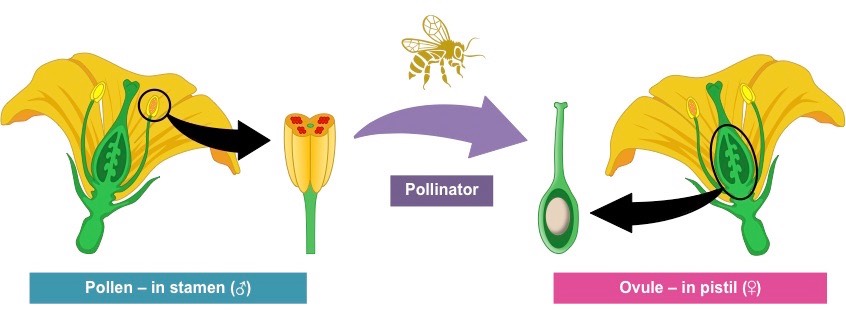![]()
Understanding:
• Success in plant reproduction depends on pollination, fertilization and seed dispersal
Plants can reproduce in a number of different ways:
- Vegetative propagation (asexual reproduction from a plant cutting)
- Spore formations (e.g. moulds, ferns)
- Pollen transfer (flowering plants – angiospermophytes)
Sexual reproduction in flowering plants involves the transfer of pollen (male gamete) to an ova (female gamete)
- This involves three distinct phases – pollination, fertilization and seed dispersal
Pollination:
- The transfer of pollen grains from an anther (male plant structure) to a stigma (female plant structure)
- Many plants possess both male and female structures (monoecious) and can potentially self-pollinate
- From an evolutionary perspective, cross-pollination is preferable as it improves genetic diversity
Fertilisation:
- Fusion of a male gamete nuclei with a female gamete nuclei to form a zygote
- In plants, the male gamete is stored in the pollen grain and the female gamete is found in the ovule
Seed dispersal:
- Fertilisation of gametes results in the formation of a seed, which moves away from the parental plant
- This seed dispersal reduces competition for resources between the germinating seed and the parental plant
- There are a variety of seed dispersal mechanisms, including wind, water, fruits and animals
- Seed structure will vary depending on the mechanism of dispersal employed by the plant
Plant Reproduction Stages

![]()
Understanding:
• Most flowering plants use mutualistic relationships with pollinators in sexual reproduction
Cross-pollination involves transferring pollen grains from one plant to the ovule of a different plant
- Pollen can be transferred by wind or water, but is commonly transferred by animals (called pollinators)
Pollinators are involved in a mutualistic relationship with the flowering plant – whereby both species benefit from the interaction
- The flowering plant gains a means of sexual reproduction (via the transference of pollen between plants)
- The animal gains a source of nutrition (plants secrete a sugar-rich substance called nectar to attract pollinators
Common examples of pollinators include birds, bats and insects (including bees and butterflies)
- Flowers may be structured to optimise access for certain pollinators (e.g. tube-shaped flowers for birds with long beaks)
Cross-Pollination

